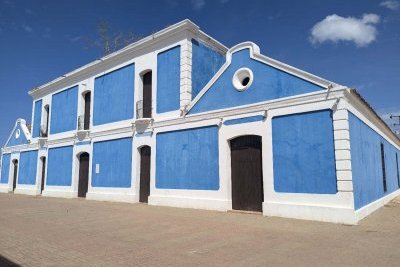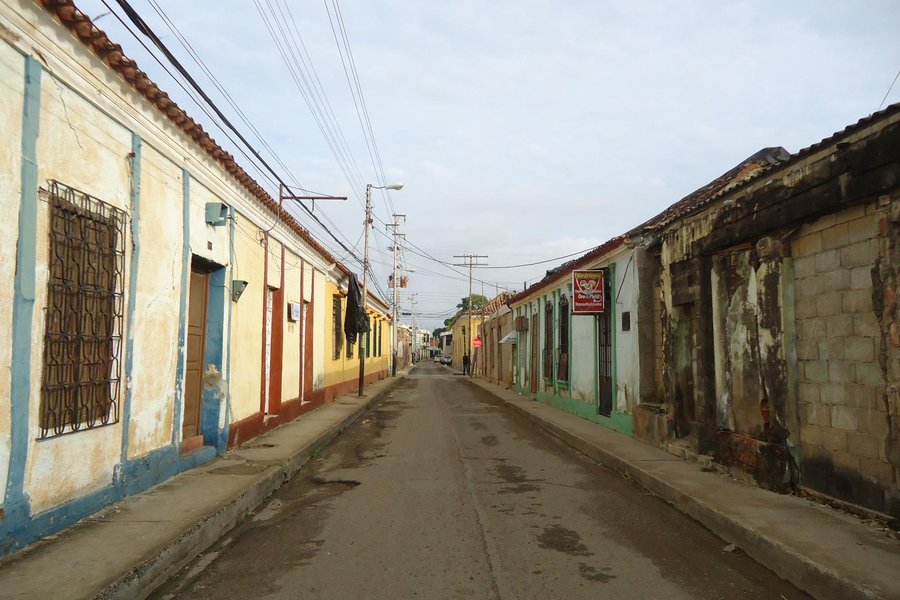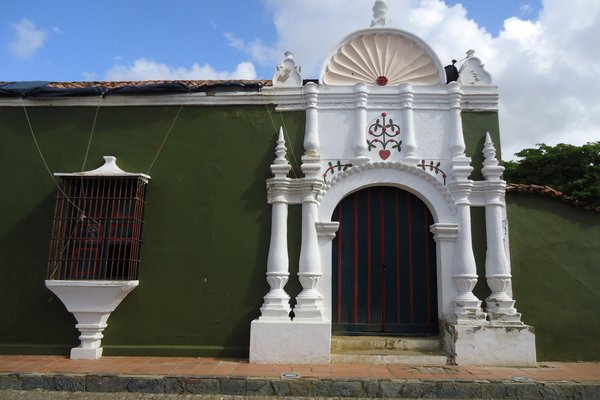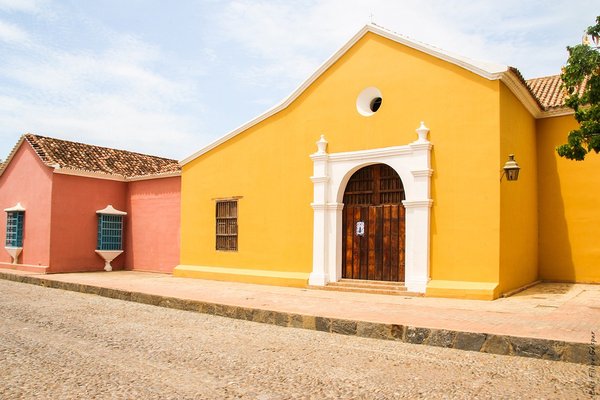Venezuela
Coro and its Port
Coro and its Port comprise an urban colonial landscape renowned for its earthen architecture that is unique in the Caribbean.
The city of Santa Ana de Coro was founded in 1527 in the early days of Spanish colonization. It has conserved its original layout and early urban landscape very well. The buildings show examples of traditional mud-building techniques, which are still being used. The architecture is a unique fusion of Mudejar, native, Spanish and Dutch influences, the latter through the neighbouring islands of Curaçao and Aruba.
Community Perspective: the only reviewer so far, Joseph, details a visit from 2009.
Site Info
Official Information
- Full Name
- Coro and its Port (ID: 658)
- Country
- Venezuela
- Status
-
Inscribed 1993
Site history
History of Coro and its Port
- 2005: In Danger
- Deep concern over gradual and considerable deterioration in the state of conservation
- 1993: Name change
- Changed at inscription from "Coro and its dunes"
- 1993: Advisory Body overruled
- Referral was advised
- 1993: Revision
- Nomination also included Coro Dunes National Park, which was not inscribed
- 1993: Inscribed
- Inscribed
- In Danger
- Deep concern over gradual and considerable deterioration in the state of conservation Since 2005
- Type
- Cultural
- Criteria
- iv
- v
Links
- UNESCO
- whc.unesco.org
- Official
-
- republica-de-venezuela.com — Santa Ana de Coro
- Related
-
- jewishvirtuallibrary.org — The Expelled Jews of Coro - 1827
All Links
UNESCO.org
- whc.unesco.org — whc.unesco.org/
Official Website
- republica-de-venezuela.com — Santa Ana de Coro
Related Resources
- jewishvirtuallibrary.org — The Expelled Jews of Coro - 1827
News Article
- Dec. 16, 2013 albaciudad.org — Jewish mikvah found in Coro
Community Information
- Community Category
- Urban landscape: Colonial
Travel Information
Red Zone Travel Advisory
All of Venezuela. "A state of emergency is currently in place due to military …
Recent Connections
-
Red Zone Travel Advisory
All of Venezuela. "A state of emergency…
-
Name changes
On inscription, from "Coro and its dune… -
Built in the 16th century
1527
Connections of Coro and its Port
- Geography
- Trivia
-
-
Built or owned by Spanish
The city was founded on July 26 of 1527 by Juan Martín de Ampíes (wiki)
-
- Architecture
-
-
Earth Architecture
Coro's traditional buildings are built of earth - adobe, or earth reinforced in a technique known as "bahareque". -
Mudejar style
" a rich fusion of local traditions and Spanish Mudéjar and Dutch architectural techniques" (OUV statement)
-
- World Heritage Process
-
-
Cultural sites rejected for Natural criteria
Coro Dunes National Park was part of the Original nomination, but not inscribed -
First inscriptions
Venezuela 1993
-
- Religion and Belief
-
-
Mikveh
Remains of an 18th century mikvah under the Art Museum Alberto Henriquez (see link)See forward.com
-
Jewish religion and culture
Synagogue -
Cathedrals
"Pope Clement VII made Coro South America's first bishopric in 1531 , thus this Church became the first Cathedral."
-
- Human Activity
-
-
Sea Ports
-
Cacao
Transport hub for cacao cultivated in its hinterland (AB ev) -
Piracy
Attacked by Pirates and Privateers 1567, 1595 and 1659. Its fortifed Cathedral was used as a refuge. In 1659 the English pirate Christopher Mings with 3 ships took booty worth 200-300k in raids on Coro and 2 other Venezuelan ports. -
Slavery
"Coro, French Republic of- Coro, a town in eastern Venezuela, was the center of a massive slave revolt in 1795. The revolt's leader, José Leonardo Chirinos, declared Coro a "French Republic" and announced that the new nation would govern itself by the ideals of the French Revolution. The Spanish government crushed the insurgents, and Chirinos along with his lieutenants was executed in December of 1796. The memory of Chirinos has been appropriated by the Bolivaran Revolution of Hugo Chavez and the airport of Coro has been named after him.
-
- Constructions
-
-
Triumphal Arches
Arco de la Federacion
-
- WHS on Other Lists
-
-
World Monuments Watch (past)
San Francisco Church, Coro (2000, 1998)
-
- Timeline
- Visiting conditions
-
-
Red Zone Travel Advisory
All of Venezuela. "A state of emergency is currently in place due to military strikes. The security situation is unpredictable and may worsen."
-
- WHS Names
-
-
Name changes
On inscription, from "Coro and its dunes" to "Coro and its Port"
-
News
- albaciudad.org 12/16/2013
- Jewish mikvah found in Coro
Community Reviews
Show full reviews
(Visited 2024.10)
In these years Venezuela seems to be a bit "removed" from the plan of international tourists. After an overnight bus from Caracas we arrived at Coro in early morning. We had some empanadas as our breakfast near the terminal, which is fair and delicious.
After the breakfast we walk ~15 min to the WHS area. San Francisco church is the most important building of this WHS and it would be your first impression. It was open when we arrived so we can enjoy the church without any problem. After we headed to Casa Balcón de los Arcaya, which opened later at 8. The house now houses a little museum but it's not that interesting. However the balcony did impress us a lot thus we took a lot of photos. In the morning of Saturday there's almost nobody on the street, only a few local residents were walking along. With this atmosphere we visited almost all WHS area. But unfortunately almost all museums are closed on weekends. (incl. the synagogue and Casa de Las Ventanas de Hierro)
Later after 10 the city started its activities, we settled down and had a short break at our accomodation. During the noon the temperature becomes red-hot so we decided to go to the Médanos later at 4. The park is not well-maintained now, but you can tell it was once full of visitors.
The follwed day we took the bus to Vela (its port). The buses shows "Velita" on their windows. You …
Keep reading 0 comments
I visited Coro in August 2009. I think the historical significance of the site is probably the main reason for its inclusion on the list, rather than any significant colonial architecture. As the part of the city that shows off the colonial past is quite small, no more than nine or ten square blocks, even with visits to the museums most visitors will probably need no more than a few hours, half a day at most, to get a sense of the city and stroll the most interesting streets and plazas and get something to eat.
Unfortunately there are not too many other places in Venezuela that retain their colonial sections at all, and certainly not with such a architectural integrity and cleanliness. Those places that do often have changes to the facades,adapted residences for other uses such as restaurants and shops, spider webs of electric lines, abandoned buildings, cracked and pot hole filled streets and piles of garbage. The cleanliness alone of Coro is enough to recommend it. (I could not help comparing it to the much larger and more dramatic setting overlooking the Orinoco of the colonial section of Ciudad Bolivar, which, unfortunately has suffered from the ravages of time, poor planning and, in many places, its use as an open garbage dump and latrine.)
I noticed the site is on the endangered list and obviously much has been done and is being done to restore and repair the colonial section and the plazas. Many of the buildings …
Keep reading 0 comments

